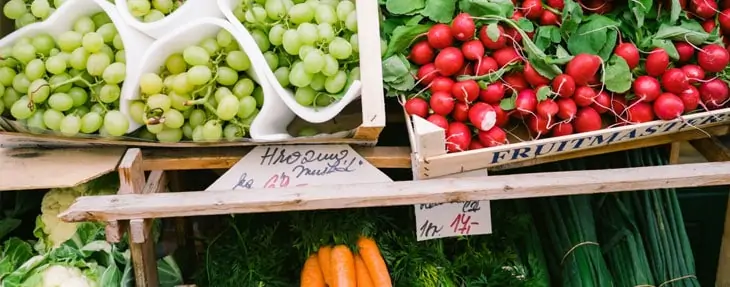Online food sales is a growing ecommerce sector, as customers gradually become more confident with online shopping and start relying on it for their weekly shop. Consumers are becoming increasingly sophisticated and demanding unusual foods and ingredients, which the internet is able to deliver to them. There’s also been improvements in the supply chain infrastructure, meaning it’s easier to get even very fresh food to people’s doorsteps. There’s even been talk of pizza delivery by drone aircraft!
But selling food through the internet brings with it a unique set of challenges. People are used to seeing their food before they buy it, and visiting the premises from where it is obtained. Online food sellers lose the advantage of being able to sell their food using smells, samples and showing the food in real life. These issues need to be addressed in order to win customer confidence online.
The good news is that customers may be prepared to pay more to receive food that’s handmade for them (such as a personalised cake) or very unusual or special foods (such as fresh seafood). This can mean you can charge a premium for getting it to them. Remember that selling edible products online is an expensive business, because of the high cost of packaging and fast shipping. Make sure that you calculate your pricing carefully to make it worth your while.
The importance of photography

If you’re selling food online, it’s absolutely essential that you offer really good photographs to make the food look inviting and delicious. Photographs are the main thing that will sell your products, so make sure you get really attractive ones made. Hiring a professional photographer is generally an expense that will pay for itself in the long run. If you’re tackling the photography yourself, consider investing in a small home studio, with good lighting, as this can really help sway buyers.
These days, many ecommerce sites use what’s known as ‘lifestyle’ photography. This means displaying the items for sale in a typical environment where they would be used, perhaps using some props that aren’t too intrusive or distracting. For example, if you’re selling home baked bread online, you may like to consider photographing it on a breadboard, next to a bread knife. This isn’t just a fashion choice; it really helps your customers get a sense of the scale of the item they are buying.
Confidence
Confidence is a really key aspect when it comes to online food shopping. How are you giving your customers confidence in your product? There are many ways to do this online. Here are just a few ideas:
- be completely transparent about the ingredients and preparation process
- display any awards or food hygiene certifications prominently on the site
- explain about the shipping process and how your food is protected in transit and how it should be stored on arrival
- add customer testimonials to your site and display reviews prominently (not just the good ones)
- use a reliable shipping company
- communicate with your customers well and quickly, especially if there are any delays or other concerns about their order
Speed

Food is a high turnover product and customers expect to receive it very quickly. That’s especially true for fresh goods that are perishable. You need to chose your shipping partner very carefully and make a decision about who is handling the customer service around shipping – you or them? Make sure that you communicate really clearly with customers about their delivery. For instance, if the food won’t fit through the letter box, someone will need to be in to receive it, so they need to know when it will arrive.
If customers are ordering food for a special event, then they need it to arrive in good time. Be transparent about when they can expect delivery and allow an option for them to pay extra for delivery at a specific time.
Packaging
It’s really important to get food packaging right, both so it looks appealing and communicates your brand values, but also so that the food is protected in transit. Your food packing may need to be updated to cope with the demands of shipping, and you may be surprised how much money this costs. If you aren’t sure how your packaging will fare in the post then it’s simple to test it out – just mail the package to yourself and see what state it arrives in. Do this several times if you change shipping companies.
Where to sell
Consider where you want to sell your food online. Many stores take the approach of setting up their own website that people can purchase from. The advantage of this is that you retain full control, you can access all the customer information such as how they found you online, and you can control the prices. But you also have the option of selling through online marketplaces or via other retail platforms. For instance, Amazon.co.uk does a thriving trade in obscure American breakfast cereals which it sells at a premium to customers in the UK. Amazon is a brand that customers have great confidence in, so it’s a good way to achieve credibility online. Other sites such as Ebay and Etsy aren’t well-known for food sales, although there are some vendors selling food through these marketplaces.
There may be other niche marketplaces for your kind of product. For instance, the souschef.co.uk site sources hard-to-find ingredients, such as exotic spices, for sophisticated home cooks. It may be worthwhile exploring if there is a similar niche site for the kind of food you are selling, as this will help you access a wide audience fairly quickly.
The law
There are a number of rules and regulations affecting food sales. Under EU regulations you need to list things such as allergens in your ingredients list, and have a use by date on your packaging. Check out the relevant legislation for your market and make sure you stick to the rules. As well as listing important information on your packaging, you should also list things such as ingredients on the website listing for that product.
